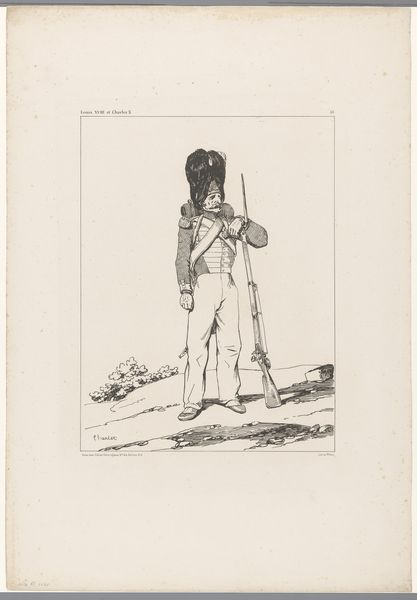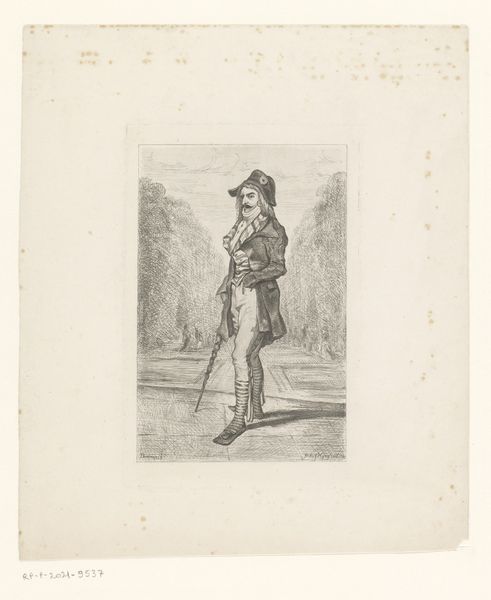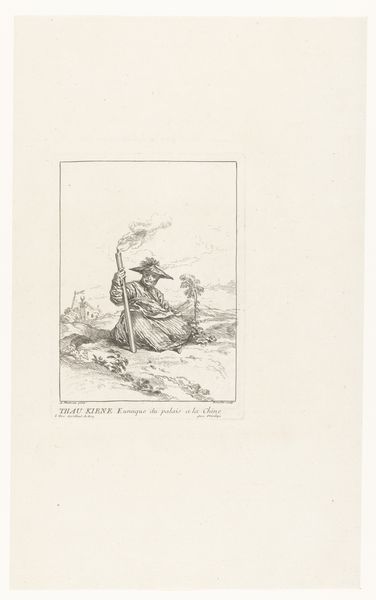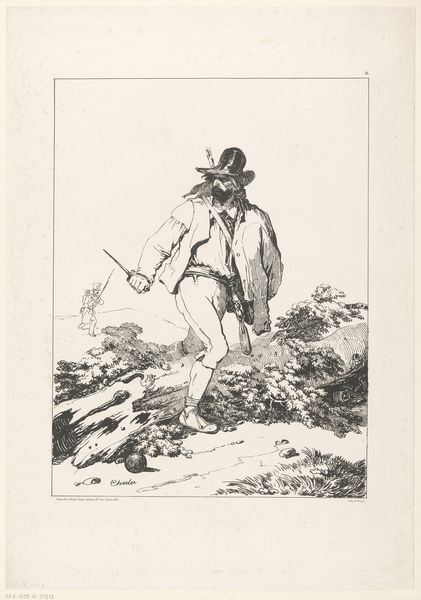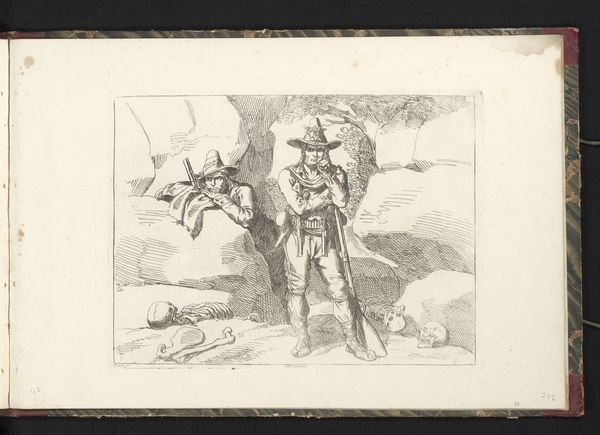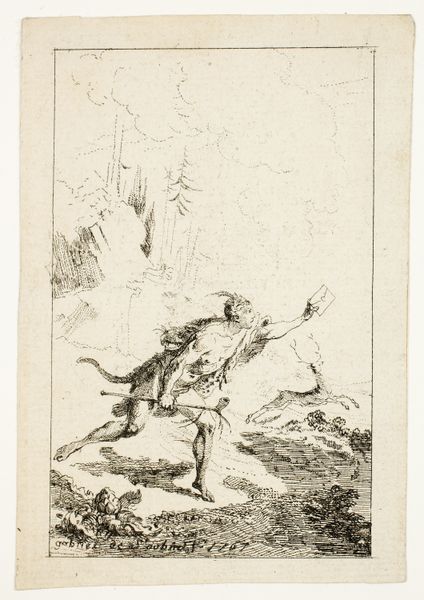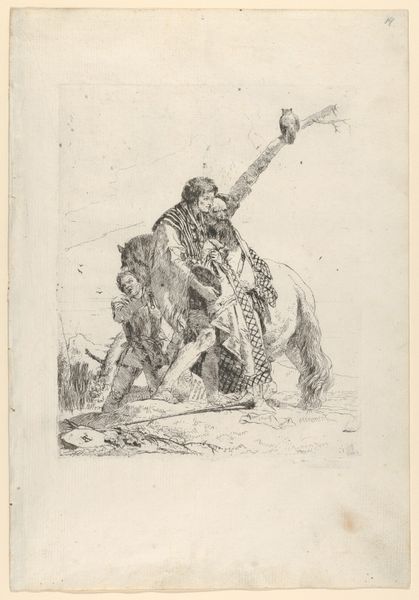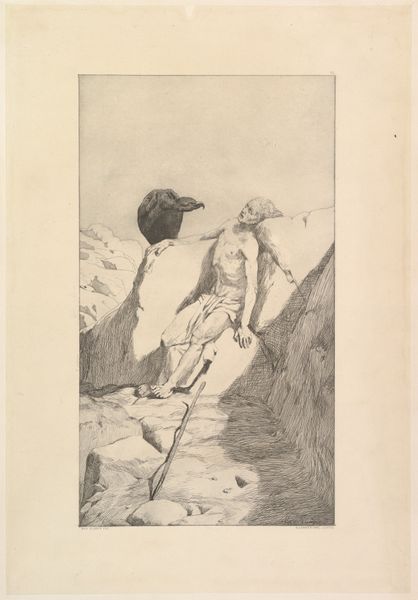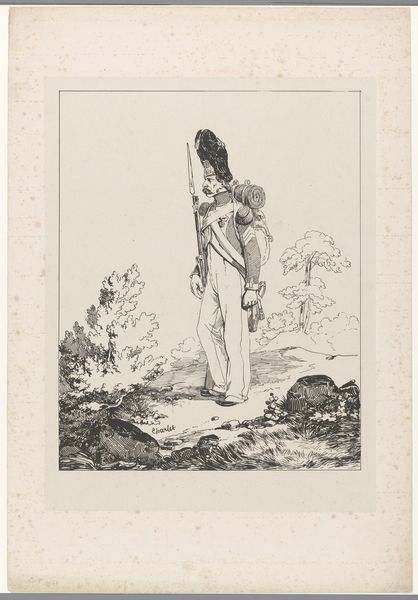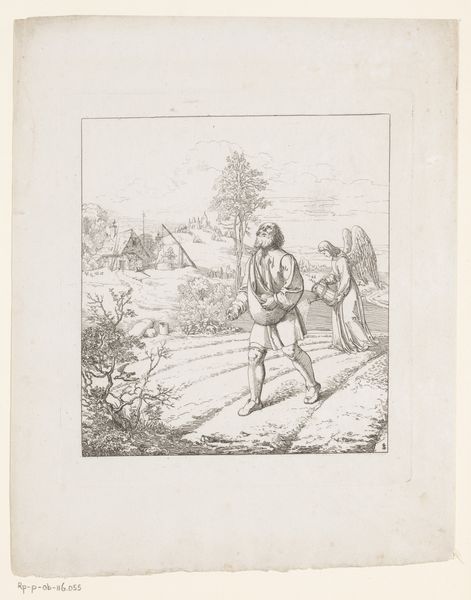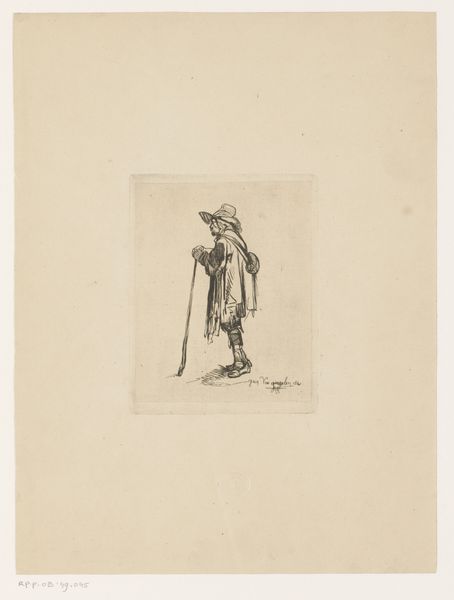
drawing, ink, pen
#
drawing
#
light pencil work
#
ink drawing
#
pen sketch
#
landscape
#
figuration
#
personal sketchbook
#
ink
#
ink drawing experimentation
#
romanticism
#
pen-ink sketch
#
pen work
#
sketchbook drawing
#
pen
#
history-painting
#
storyboard and sketchbook work
#
sketchbook art
Dimensions: height 564 mm, width 395 mm
Copyright: Rijks Museum: Open Domain
This is Nicolas Toussaint Charlet’s "Infanterist van het Republikeinse leger in Egypte," a print made with black ink on paper. The printmaking process would have involved the artist creating an image on a matrix, perhaps a metal plate, and then using that to transfer the image to paper. The stark contrast of the black lines against the white paper creates a sense of immediacy, perfectly capturing the soldier's weary march across the Egyptian landscape. There’s a directness to the line work, which is a real hallmark of printmaking. Consider how this method democratizes art. Unlike a painting, which is a unique object, a print can be reproduced many times, making it more accessible to a wider audience. In this context, it allowed for the dissemination of imagery related to the Napoleonic campaigns, shaping public opinion and national identity. The making of this print, then, is deeply entwined with social and political forces. It is an object made with readily available materials for a mass audience. This allows us to understand how it functioned as a tool of propaganda, a celebration of military might, and a reflection of the era's fascination with distant lands.
Comments
No comments
Be the first to comment and join the conversation on the ultimate creative platform.
